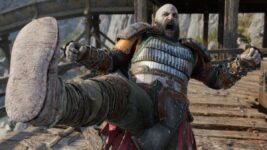Four years into Sony’s big PlayStation PC initiative, you’d think the novelty of launching one of its huge tentpole action games from my Steam library would’ve worn off by now, but I still get a kick out watching the publisher’s once-closely guarded exclusives emerge from their walled garden. Something about seeing Xbox button prompts on Kratos’ axe or fiddling with a full suite of graphical settings before I even select “New Game” brings Ragnarök down to earth, shedding a layer of artificial importance that platform owners like to muster.
NEED TO KNOW
Sometimes that works against Ragnarök, as playing it on the same platform where the most ambitious and unconventional videogames regularly blossom can highlight how safe and conventional the Sony blueprint has become. It also highlights how rarely we get accessible action games produced at such a high level of craft, scale, and beauty. Kratos and Atreus’ second lap around the realms isn’t as special or clean as the first, but Ragnarök is the kind of sequel that goes down smooth.
As does this PC port, for the most part. Jetpack Interactive, the same outfit that handled the great 2022 God of War port, is back for the sequel with more solid (but not flawless) work.
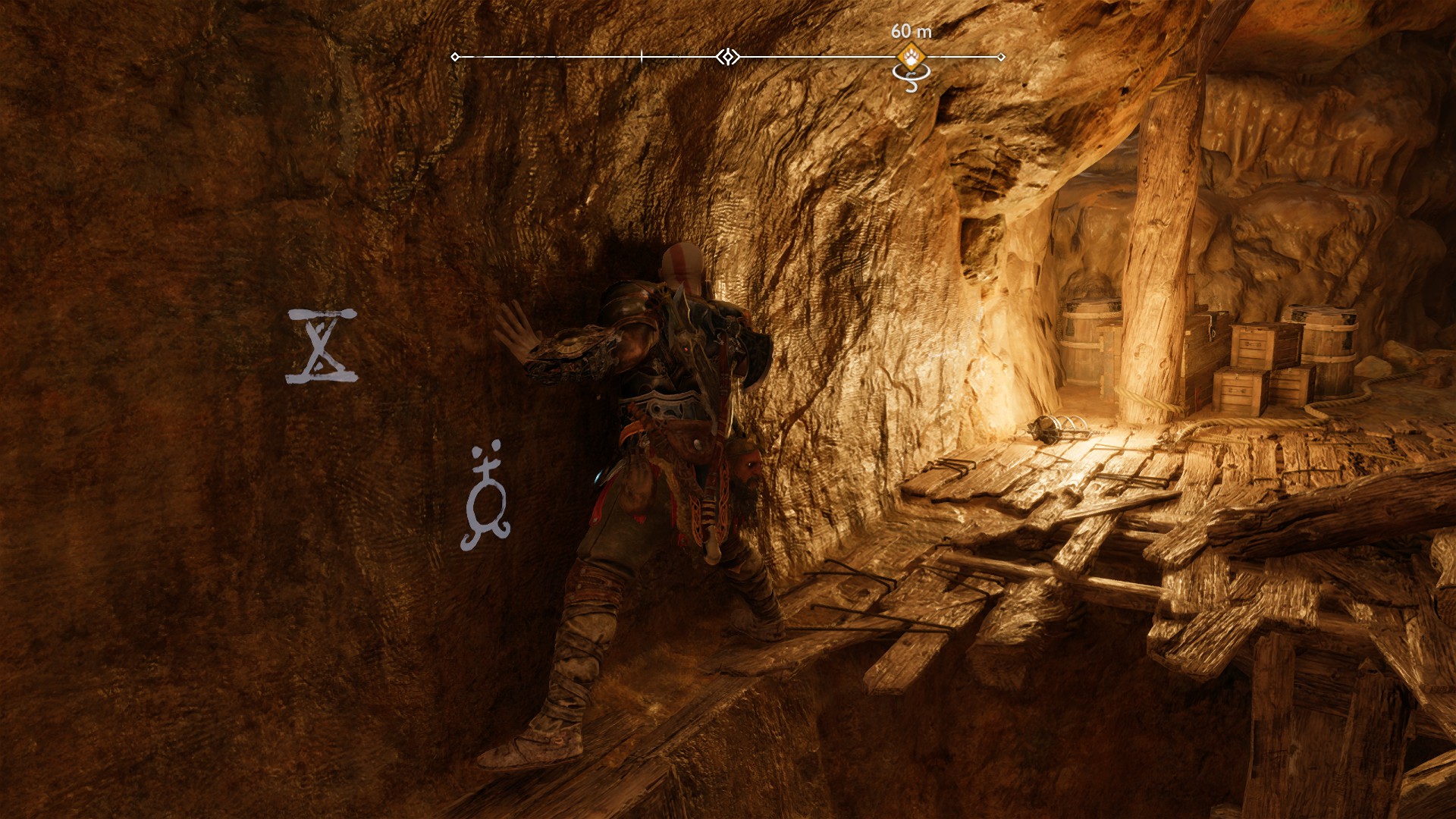
Dreaming in 1080p
Considering Ragnarök also came out on PS4 and looked pretty close to its predecessor when I played it two years ago, I’m not too surprised that this port flies on my aging RTX 2080 Super. At 1080p, I’m consistently reaching 80-100 fps (depending on the size of the area) with everything set to High and DLSS on Quality.
In a lot of ways, Ragnarök is a dream game for the PC gaming majority that’s still rocking older hardware. That PS4 baseline means that you won’t find technical wizardry on the level of Black Myth: Wukong’s cloud effects, Alan Wake 2’s photoreal forests, or Star Wars Outlaws’ forcibly-raytraced lighting, but Ragnarök’s flexibility, otherworldly vistas, and detailed characters are their own showpieces.
This is the 1080p gamer’s sweet spot where reasonable hardware requirements meet art direction so strong that this two-year-old game that runs on 2013 hardware is more attractive on my machine than more technically sophisticated games. Still have a card that starts with “20” or ends with “60”? This one’s for you. For the first time in too long, I’m cranking every graphics setting up on a big-budget action game without sweating the frame rate. Sometimes an old game juiced to Ultra is just better than the latest hotness on an inconsistent Medium.
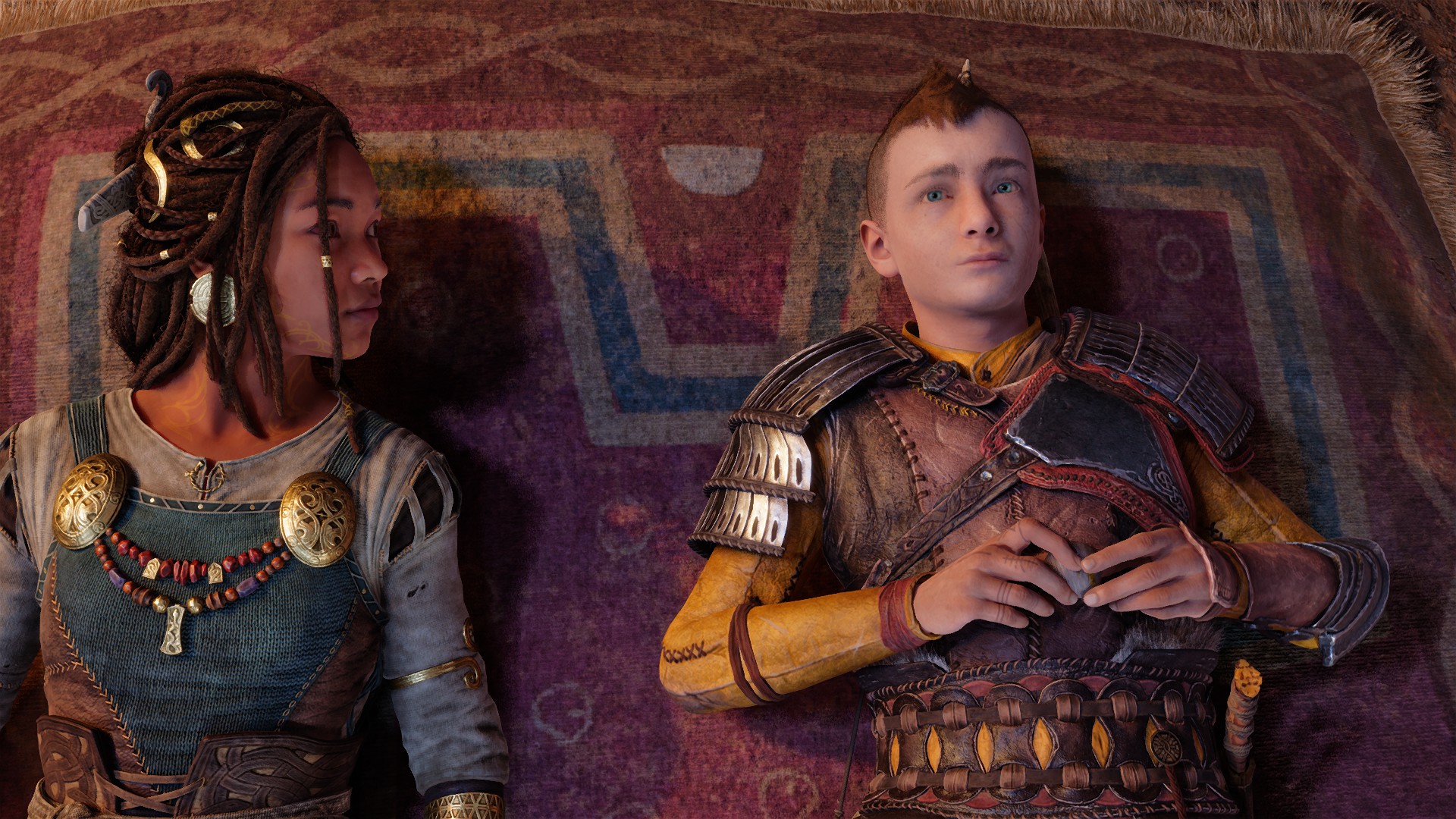
I’ve hit some annoying snags, though. Not every realm runs as effortlessly as the central region of Midgard. My framerate dipped significantly in the early trip to Svartalfheim, for instance, but things have been smoother in the other realms I’ve visited since.
One major pain point is the “Realm Between Realms,” that donut-shaped tree platform that Kratos jogs around every time you fast travel. Performance consistently tanks to 20-30 fps every single time I go here. Thankfully it’s just a playable loading screen, so it doesn’t impact crucial moments and you’re never there for very long, but the plummet is always jarring after two-hour doses of problem-free exploration. YouTuber Daniel Owen looked into this and noticed that turning down Tesselation fixes the problem, so this seems like an isolated optimization issue. Jetpack has already smoothed over a few rough edges in the week since launch, like a bug that prevented DLSS Frame Generation from activating, so I’m reasonably confident it’ll figure this bug out too.

Dragging feet
My second God of War Ragnarök playthrough (which I’m not done with yet) is cementing a few thoughts I had when I rolled credits the first time. Ragnarök is great because it’s a second helping of one of my favorite games of the previous decade, but it’s just all over the place. Our main players spend a surprising chunk of this story in an overstretched windup phase: arguing about prophecy and meandering about the realms while gesturing at an “inevitable” clash with Odin and Thor teased by the first game’s ending.
That original stinger got everyone riled up for years expecting an epic, Avengers Endgame-style conclusion. Ragnarök opts for a less obvious, sometimes subversive path, placing prophecy on the backburner and making room for characters to work through their respective baggage—Atreus wants to be his own man and take risks, Kratos wants to hold on tight to the child he can finally connect with, Freya has a cocktail of dead son and bad mom trauma, and even the dynamic blacksmithing duo Brok and Sindri get time in the spotlight.
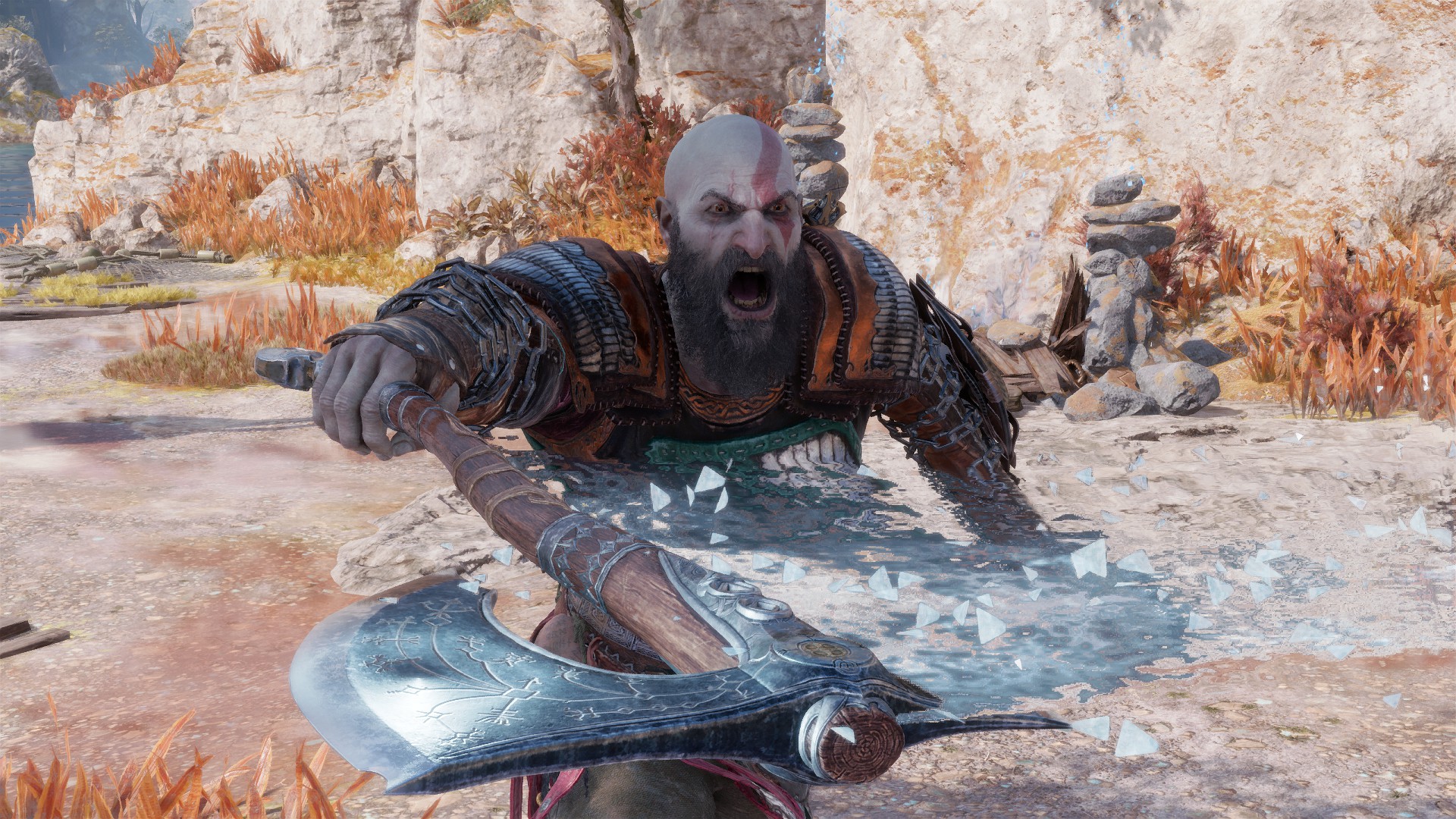
Ragnarök isn’t as subtle at masking what is often adventuring for adventuring’s sake.
The good news is these are all fun characters that I wanted to spend more time with, but Ragnarök doesn’t have God of War 2018’s dialed-in focus. That game had the benefit of revolving around a central roadtrip, which let Sony Santa Monica organically weave character moments into Kratos and Atreus’ main quest to reach the highest peak in the realms. Ragnarök basically says “there is no main quest” for a lot of the game, and lets character-focused “loyalty missions,” to borrow BioWare RPG parlance, take the main stage. It does wonders for fleshing out God of War’s take on Nordic mythology, but can be murder on the attention span. Both games traffic in macguffins—designing entire chapters around finding a person or doohickey that can open a locked door or dispel mysterious magic—but Ragnarök isn’t as subtle at masking what is often adventuring for adventuring’s sake.
Sometimes that feels like the point. An early sidequest in Alfheim begins when Kratos shows an out-of-character interest in investigating the cries of an animal in distress. During the quest, Atreus chimes in multiple times confused about why Kratos is going along with something he’d usually have to drag his father into, each time rebuffed with an in-character Kratos grumble.
Eventually Atreus confronts his father, accusing him of trying to keep his mind off an impending Ragnarök. The disembodied head of Mimir, clearly uncomfortable, finally cuts in: “Have you ever considered… he just wants to spend time with you, lad? While he still can.” It’s one of a handful of moments where Sony Santa Monica says the crux out loud: The journey’s better than the destination. Yea yea, true enough, but I’m inclined to agree with Atreus. Ragnarök spends too long thinking about acting when it should get up and do something.
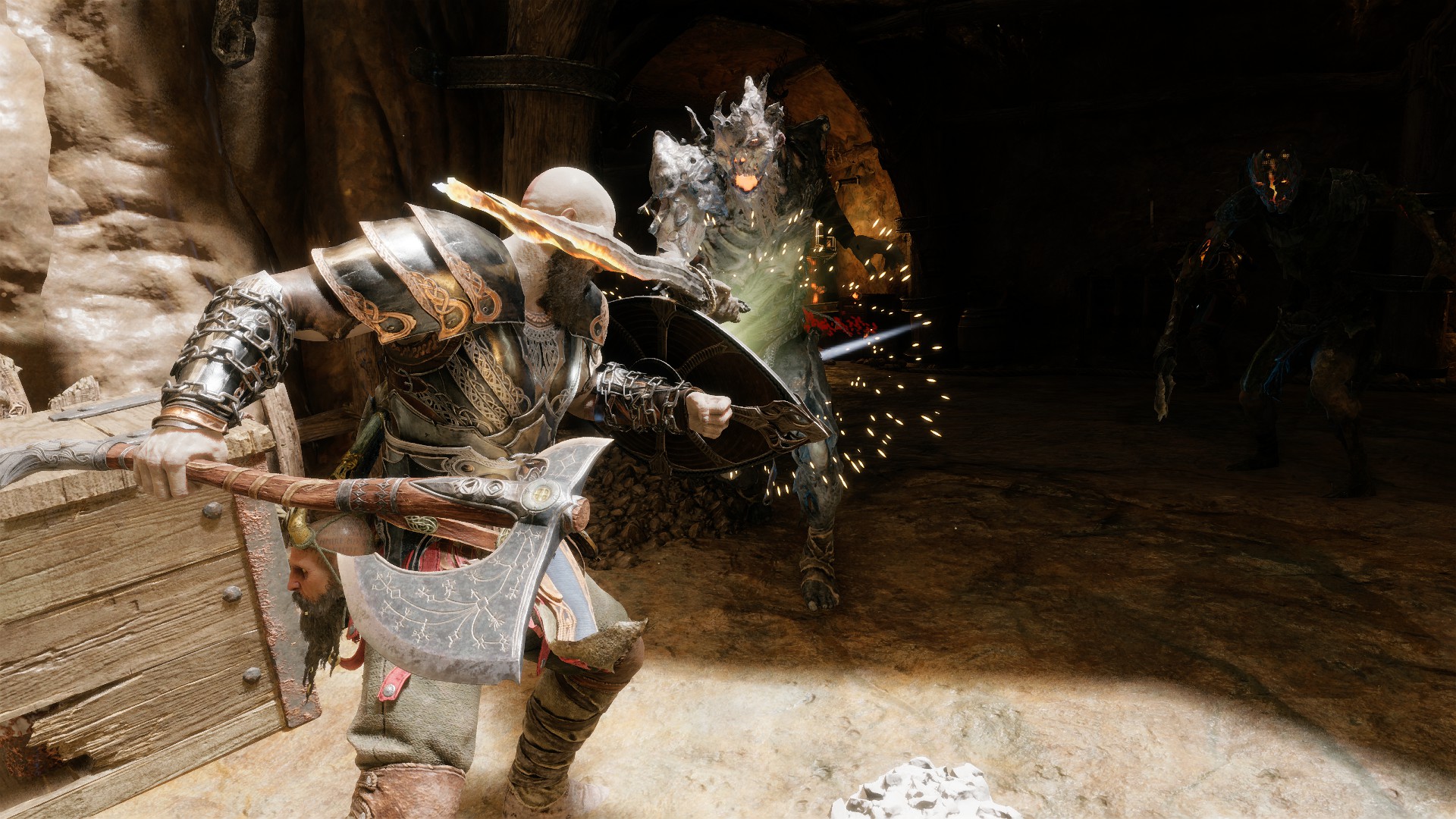
Axecellence
At least Sony Santa Monica didn’t hold back on combat. Much of Kratos’ old moveset returns with some later upgrades unlocked from the start and others gained at an accelerated pace. That’s to make room for Kratos’ new tricks: an expanded focus on status effects and specialization.
It’s like skipping straight past all the boring loot in Diablo that doesn’t do anything and getting straight into the good stuff.
Kratos has his two bladed loves (the Leviathan Axe and Chaos Blades) from the jump this time, and both have new charge-up attacks that quickly inflict Frost and Burn on groups of enemies. Enemies inflicted with one weapon become extra vulnerable to the opposite weapon—presumably a move to get this axe main to actually swap to the blades for a change. Well, it worked: The incentive pushed me to use everything at my disposal and squeeze a bit more juice out of a combat system I already liked. Swapping weapons is a pain on controller, though, and that’s one nice bonus of the PC version. Ragnarök’s surprisingly intuitive keyboard controls let me swap efficiently with the number keys, and I’m playing this one on keyboard way more than the first. You might want to rethink some of the default keybinds, though (holding Ctrl to aim is still weird).
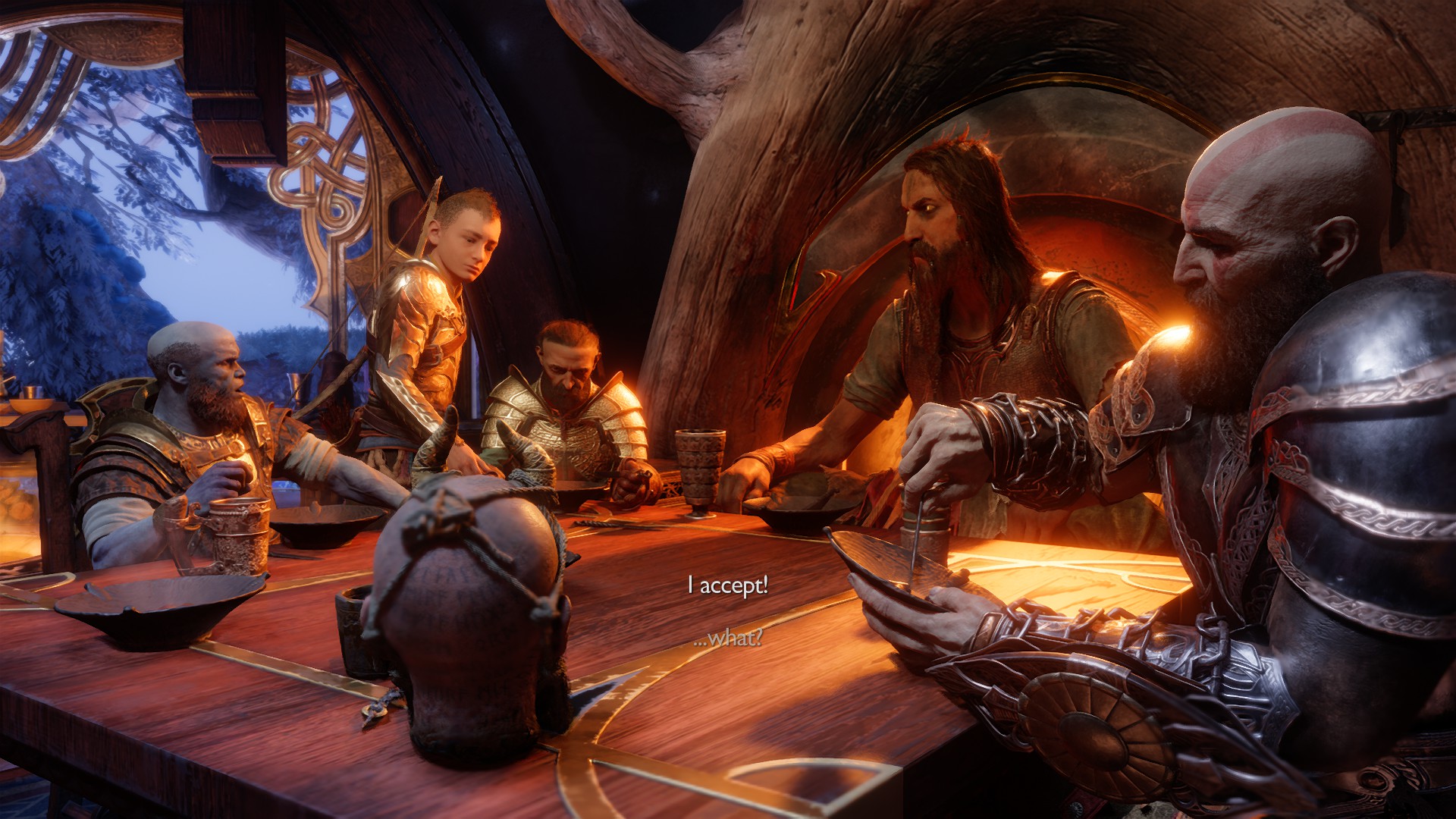
These games get deserving criticism for stat bloat, but I appreciate the way Ragnarök’s gear shifts the focus away from increasing raw Strength or Vitality stats and instead gives every armor set, shield, and even most axe pommels their own perks or entire moves associated with them. There’s an armor set that’s all about Runic moves, a shield that can’t block bigger attacks but supercharges Kratos’ shield bash, and even an alternate Rage state that trades the big man’s godly temper tantrums for a quick health boost.
It took too long for me to realize that this isn’t a game where you need to abandon the gear you got in the beginning. Armor sets can be upgraded throughout the whole game and stay statistically relevant, as far as I can tell. I don’t actually know if the armor I’m wearing right now gives me the best possible damage resistance, but I don’t care, because it has a set bonus where I deal more damage the closer to death I am while another perk converts Rage meter into HP if I’m about to die. It’s like skipping straight past all the boring loot in Diablo that doesn’t do anything and getting straight into the good stuff that you can build a whole playstyle around.
It’s those kinds of smart, obvious-in-retrospect improvements over God of War that make Ragnarök a proper sequel. Fighting stuff is just way more fun here—so fun that I almost forgive how friggin’ long and meandering that story gets. Without the narrative momentum of that first game, the aspects of Ragnarök that haven’t meaningfully evolved—puzzles, side challenges, and all those nearly-automatic climbing sections—grind against hours of expositional conversations that I’m not that invested in. I love God of War, but I only like Ragnarök.
